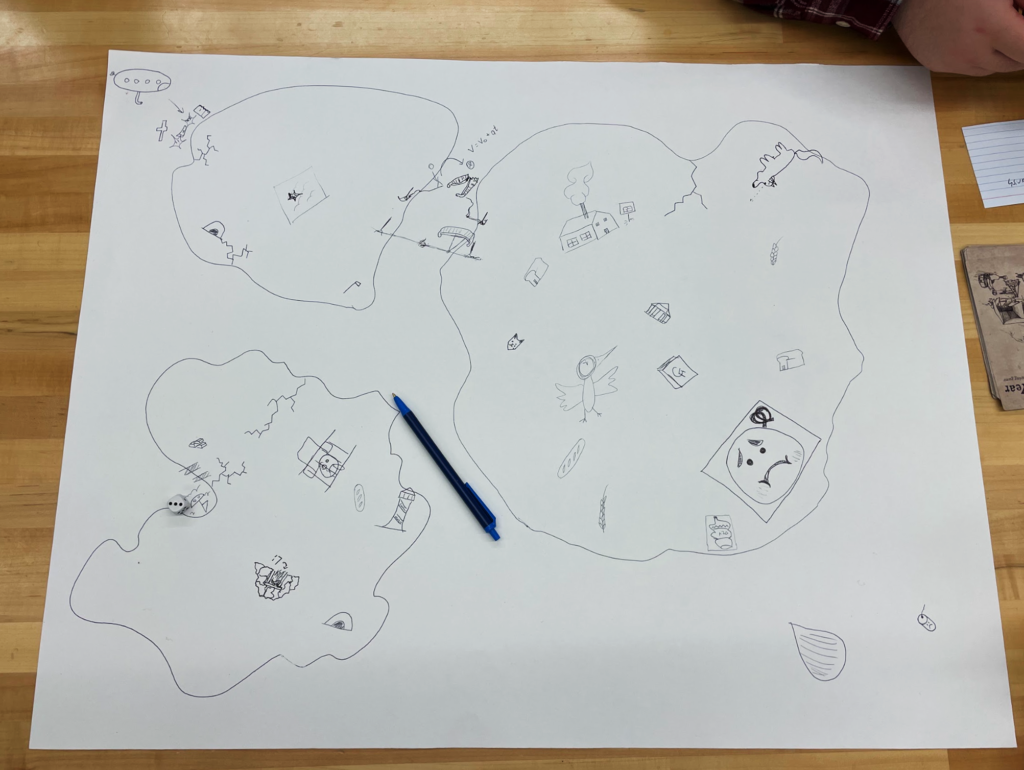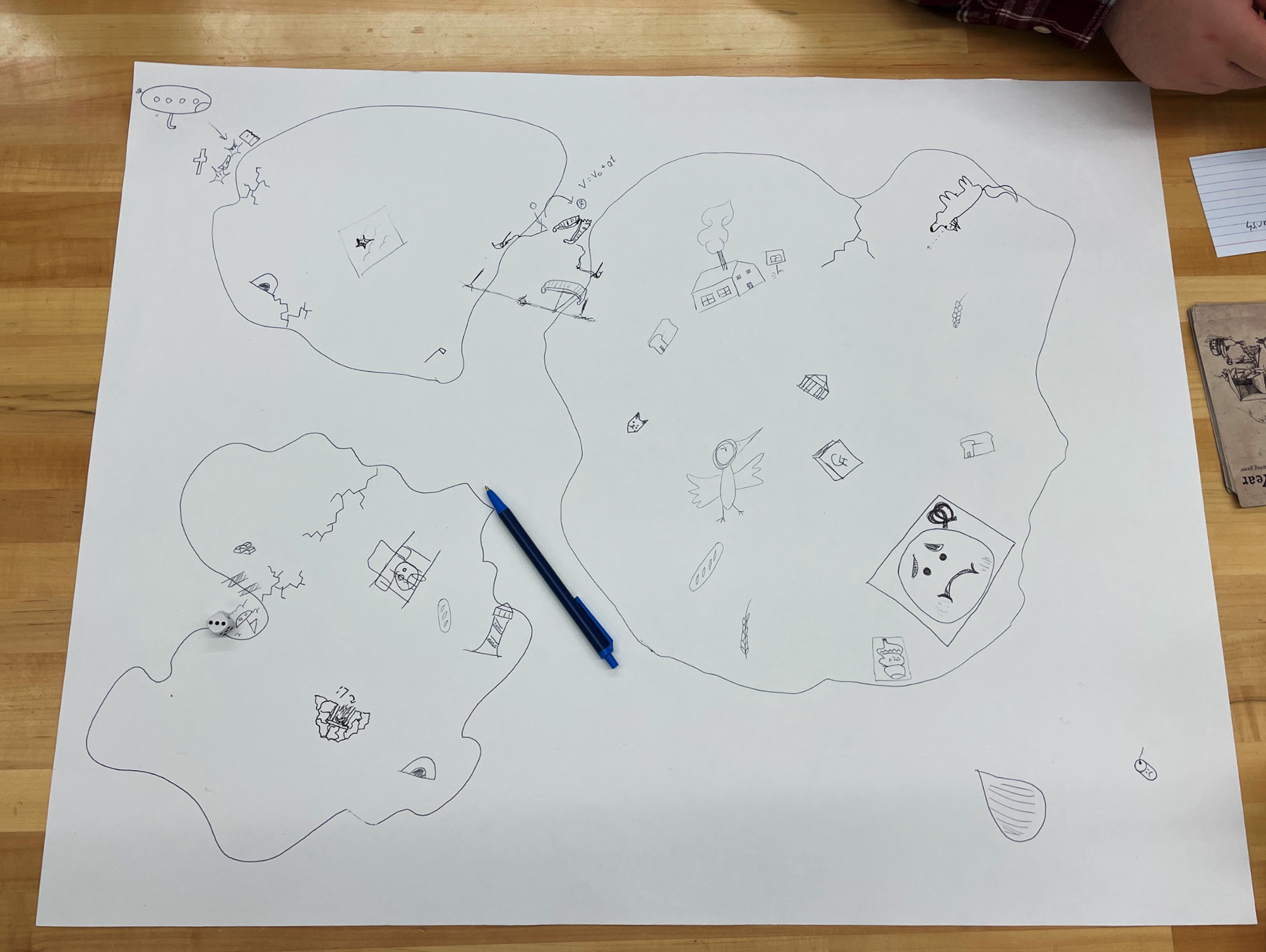“I, for one, am fine with the Catholic starfish,” I stated. My tablemates nodded solemnly, each reaching for a skull-shaped token. A moment passed, and the next person gave their verdict on whether religious sea creatures are welcome on our bountiful island.
As I reflected on my brief yet evidently contentious statement, I found that the most salient aspect of the interaction was not its obscurity but rather its affective imprint. A player’s affective experience with tabletop role-playing games (TTRPGs) predominantly stems from the game’s formal elements, interactions with other players, and the player’s personal beliefs, both about the game and extending beyond the magic circle. The Quiet Year (2013) ambiguates the role of the player, hence complicating players’ understanding of their agency and interactions with each other.
The game situates the players in a recovering community following a war with the Jackals, for which the players represent “currents of thought within the community.” Specifically, The Quiet Year breaks the convention of splitting players into discrete identities. From teams in Capture the Flag, to different-colored settlements in The Settlers of Catan (1995), to predefined characters in Dungeons & Dragons (1974), player identification often drives investment in the game’s outcome. In The Quiet Year, however, the player becomes porous; my tablemates embodied climate disasters, labor unions, political tensions, and even a young Karl Marx, momentarily incarcerated over an altercation with our starfish visitors. By framing players as external, amorphous forces rather than stable entities, the game explores the uncomfortable boundary between investing in a community and preying on a vulnerable population, occupying a space more analogous to god games like The Sims (2000–) than other titles within the TTRPG genre.
Though The Quiet Year operates like a god game, it offers a distinct emotional palette. The game technically centers around a post-apocalyptic narrative; however, it does not borrow its aesthetics or sense of urgency from dystopian genres. Players are met with minimal directions and a handful of rustic game pieces in a burlap sack, and they are told that their community will come to end with the arrival of the Frost Shepards. Nonetheless, the table was imbued with a feeling of acceptance over desperation; we were motivated to make something of our short time together rather than change our community’s fate. My first role in the game was a bread monopoly. Bread was in abundance. I drew baguettes inside our island’s lighthouse. I erected a bakery and later expanded it. My first project was a wheat farm. I expended my limited actions on being a bread monopoly and only felt satisfied when our map was flooded with poorly-illustrated loaves of bread. But when a starfish trampled my wheat farm, I stepped out of my role as monopoly not to intervene in the starfish’s endeavors but to propel the situation. Bread-related events became part of my personal history; regardless of whether those events bolstered or damaged my empire, I—as an individual, not a character—felt represented when my group lingered on that branch of our story.
The instance in which I chose to embody a new force against my character’s motivations marks a departure from the passivity through which simulation games approach player identification. Particularly with god games, players are often motivated to explore decision spaces to gauge the game’s pre-programmed mechanisms; for instance, one might kill a Sim to understand how the game handles death. Because The Quiet Year lacks deterministic outcomes or an accepted logic, players must rely exclusively on their tablemates’ creative capacities to concretize the outcomes of their actions. In decoupling players from discrete, stable identities, my group chose to withhold personal motivations in place of a collective motivation: survive together in the face of an inevitable end.
Thank you to Evis, JJ, Izzy, and Eren for a wonderful introduction to TTRPGs!

